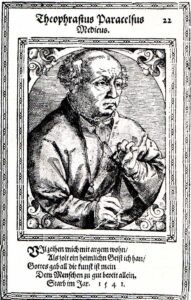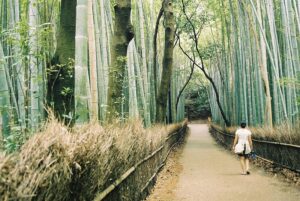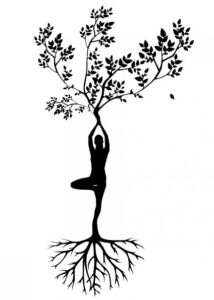The art of healing comes from nature, not from the physician. Therefore the physician must start from nature, with an open mind. – Paracelsus

Paracelsus, a 16th century Swiss physician, incorporated minerals, plants and earth metals into medicinal treatments for patients. His homeopathic practices led to the union of medicine, chemistry and nature. He believed that the body should be in harmony with the environment and advocated for physicians to study nature and the human body.
This line of thinking has prompted generations of researchers, scientists and health care professionals to study the effects of nature on the body. Today, from this research, we know that even a simple walk in nature reduces stress levels, revitalizes the body, and regulates the body’s internal functions.
For these reasons and more, doctors have begun to actually prescribe nature to their patients.
Prescribing Nature Programs
Prescribing nature programs vary from forest bathing to outdoor visits for patients to prescribing nature for general mental and physical health benefits.

People in Japan practice Shinrin-Yoku (forest bathing) as a means of medicine. Forest bathing involves being with the trees, enveloping yourself with the forest and relaxing with nature. While taking in the scenery, you also take in phytoncide, the plants’ defense against disease and insects, which supports the immune system.
Scottish doctors were granted the right to prescribe nature in October 2018, and their goal is to reduce chronic illnesses like heart disease and diabetes with medicine and nature. The doctors believe in involving patients in their own treatment process and they’ve created a calendar of activities, places to go, and sensory and observation quests for the patients to do.

The Centre for Sustainable Healthcare in Oxford, England established the NHS Forest program, which utilizes green space for healing purposes. As part of hospital stay care, patients are taken to nearby green spaces for exercise and enjoyment.
Here in the US, doctors in 34 states are prescribing time in local and state parks as part of their course of treatment for physical and mental health issues. The National ParkRx Initiative and Park Rx America organizations work with healthcare providers, community organizations and park agencies to inform the public about health benefits of nature and the nearest parks in their area. The parks listed in their system are ones that have partnered with them, but patients can use any green space in their neighborhood to fill their nature prescription.
Healthcare Results From Nature Prescriptions
Environmental psychologist Roger Ulrich put nature prescription to the test in 1984. Patients recovering from gallbladder surgery were selected for a study in which some were given rooms with a view of nature and others had a view of walls or brick. Patients with the view of nature from their room had a faster recovery, needed less pain medication and had fewer complications post-surgery.

Researchers in Norway referred to Ulrich’s outcomes as they compared patients’ recovery experiences due to a view of nature and/or an indoor plant in their room. The patients, recovering from heart and lung illnesses, with an unobstructed view of nature reported a more cheerful disposition in mental and physical health than their counterparts who had a partial or non-existent view of nature. These patients also spent less of their day napping in their rooms and were happy to seek solitude in their room.
Going beyond the hospital room, doctors prescribe nature to their patients for a number of ailments, from obesity to depression and anxiety to ADHD. Environmental psychologist Ming Kuo researches how the body reacts to nature to reduce the effects of such ailments. She examines the place, contributing natural elements, psychological and physiological state, and behaviors to determine health outcomes.
Here are a few of her findings:
- Depression is reduced by the high concentration of negative air ions in forested and mountainous areas, and near moving water
- The immune system is strengthened by ecological biodiversity of microorganisms that live on skin and in the gut
- Views and sounds of nature increase parasympathetic activity (regulation of the heart rate, intestinal and gland activity, and sphincter muscles)
- Didehydroepiandrosterone (DHEA) has cardio protective, anti-obesity, and anti-diabetic properties and increases after a walk in nature
Prescribing Nature for Yourself
Here are some ways you can enjoy nature, even without a prescription:
Daily Activities
- Place a plant or a picture of your favorite nature scene in your room or office
- Go for a walk in between class or when on break at work
- Open the blinds and window in your office or room
- Pray or meditate outside
- Garden
- Explore your own backyard
- Bird watch
- Visit a neighborhood park or nature center
Monthly activities
- Visit a state park
- Go to a beach or lake
- Organize a community day for outdoor activities
Yearly Activities
- Find your wilderness/nature spot and get to know it through an extended stay
- Host an outdoor fair with green exercises for all


